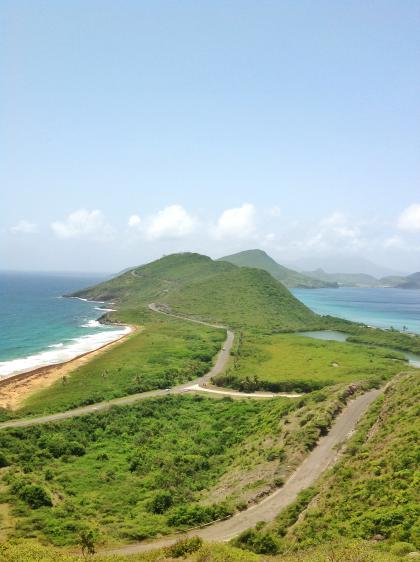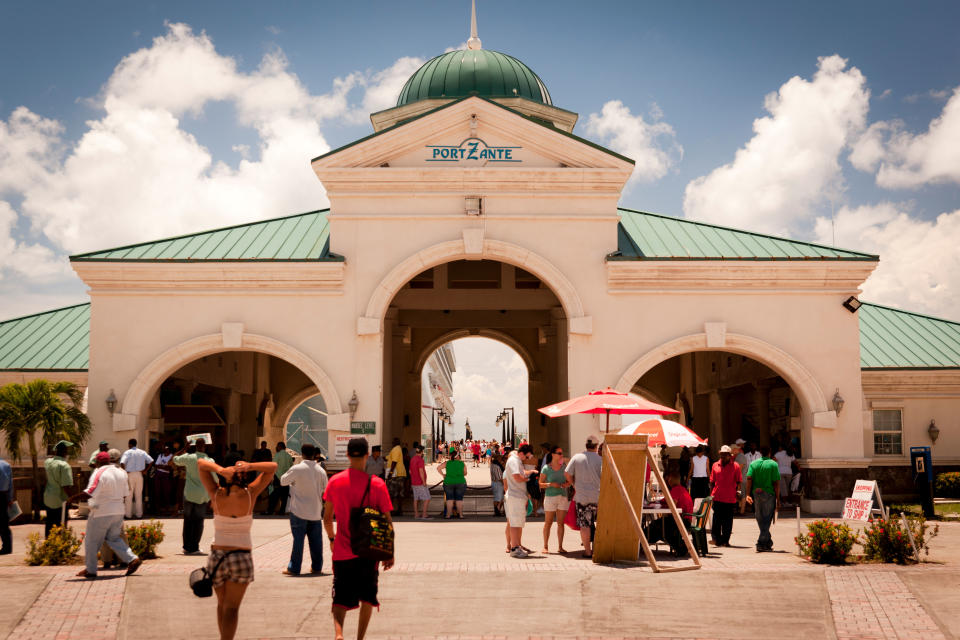St. Kitts: Bring the kids - there's something for everyone




St. Kitts was the first Caribbean island to have English and French colonies (hence it's name "Mother Colony of the West Indies), and nothing has shaped the island more than its sugar plantations – the African slaves brought over to work on them. Remnants of the sugar industry are still visible scattered across the island, such as the ruins of stone windmills that once provided the power to crush sugar cane into molasses and rum.
One not-to-be-missed excursion is to Brimstone Hill Fortress, a UNESCO World Heritage site and national park. Built by slaves, stone by hand-cut stone, the British mounted it with cannons in 1690, and for nearly 150 years it was of immense strategic value to the British (and for a time the French, who captured it in 1782 and held it for a year). Today, "The Gibralter of the West Indies" commands one of the most impressive views in the Caribbean: From its 800-foot elevation you can gaze out on the nearby islands of Nevis and Statia.

More than a quarter of St. Kitts' 65 square miles is covered by rainforest, but the forest is growing as it reclaims land hacked out for sugar cultivation centuries ago. One vestige of those colonial days are still abundant on St. Kitts: green vervet monkeys, who were brought over from West Africa, along with slaves as a status symbol. Local lore has it that when when the French finally lost its claim to the island in the late 18th century, their monkeys became a brilliant bit of ecological warfare: They knew that left behind, the freed furry marauders would decimate British crops. Today, the monkeys can be spotted all over the island – even cadging drinks on the beach (this BBC video is priceless)
Today, monkeys outnumber the human population (around 35,000) on St. Kitts.

If you start to get a little restless after a day or two on the beach, head to the rainforest and (dormant) volcanoes of the island's interior. For adrenaline junkies, there's zip-lining and mountain bike trails. Or hike to the Mt. Liamuiga (the name means "fertile island") volcanic crater, where from the summit you can see out over the islands of Saba, Statia, St. Barths, St. Martin, Antigua, and Nevis. Peering down into the crater, often likened to "giant salad bowl, take comfort in the fact that it hasn't erupted in about 400 years – despite the steam and that funny sulfur smell emanating from below.
Greg's Safaris offers several different tours, so families can choose according to length, physical challenge, and your interests. Greg's family has been on the island for generations, and he's a treasure trove of local knowledge.

Though a relatively small island, St. Kitts has a range of lodging options, including romantic little B&Bs and charming family-owned inns. Then there's the Marriott St. Kitts Resort, the only large hotel of its kind (400 rooms) on the island, spread out over 26 acres of Atlantic beachfront property.
With several swimming pools and a protected beach, it's the perfect get-away for families with kids, who can splash all day to their hearts' content. There's even a Kids Club, open during the day and on some evenings, where the young set can enjoy swimming and golf lessons, croquet, "theme days," and other organized activities (and mom and dad get a little break, too).
A great assortment of restaurants means everyone in the family can find something to their liking: Blu seafood restaurant, Royal Grille Steakhouse, La Cucina for Italian, and several casual options. The resort also offers all-inclusive packages, which can be a godsend for parents who don't want to sweat the details while they're on vacation.


Don't pass up an opportunity to explore the Southeast Peninsula, an arm of land reaching toward Nevis to the south, an area of rugged beauty and marvelous beaches. Reggae Beach and it's restaurant / bar are at one end of Cockleshell Beach, and the Spice Mill restaurant at the other. Both beaches are heavenly for those who love to swim and snorkle – strong swimmers have been known to cross The Narrows to Nevis two miles away on the other side.
Reggae Beach Bar is also home to Wilbur the swimming pig, who weighs in at a hefty 900 pounds or so. Though getting along in age now, he can still be seen ambling into the water to cool off with a refreshing splash. There's also a small collection of animals that have been rescued on the island, including a green vervet monkey and frisky young goat. Locals come on Sunday afternoons to dance to live music.

Bustling little Basseterre (pop. around 12,000) is the capital of St. Kitts, and home to its ocean-facing gateway, Port Zante. Port Zante has become an increasingly popular cruise-ship port of call, and after five years of continued growth, more than 650,000 passengers are expected to visit St. Kitts this cruise season (Oct. 2011-Sept. 12). In addition to strolling the port's sunny, wide promenades, visitors can stock up at the numerous duty-free shops for those must-have island souvenirs.
You can also charter a fishing boat at Port Zante, or if you want to catch a ferry to nearby Nevis (about $20 for the 30- to 45-minute ride), head to the nearby ferry port.

Nearby is the Berkeley Clock, a lasting reminder of the island's British colonial past and the second-most photographed site on the island, after Brimstone Hill. The ornate, bright-green Victorian-era bronze timepiece sits in the middle of "the Circus," a small roundabout inspired by Picadilly in London.
Saturday is market day in Basseterre and a great way to – quite literally – get a taste of the island. The streets are elbow-to-elbow with vendors selling mangoes, guavas, tomatoes and fresh flowers. Even if you don't buy anything, it's great way to immerse yourself among the locals, and people-watch.


